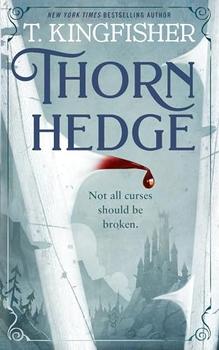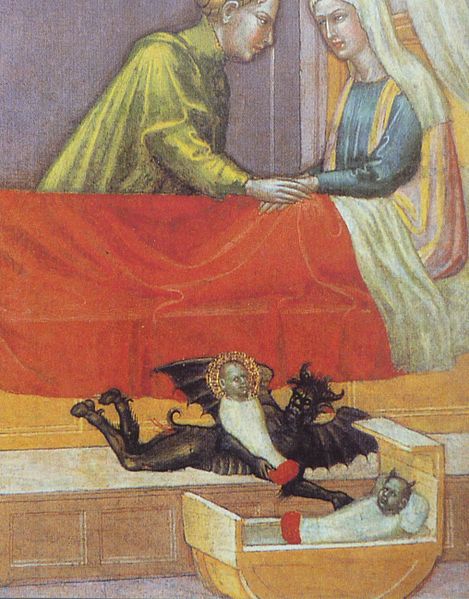Summary | Excerpt | Reviews | Beyond the Book | Read-Alikes | Genres & Themes | Author Bio

This article relates to Thornhedge
 In addition to being a reimagining of the Sleeping Beauty fairy tale, T. Kingfisher's novella Thornhedge is inspired in part by the tradition of stories about changelings. In European folklore, changelings represented an intersection between the fairy world and the human world; a fairy would steal a baby—usually one who had not yet been baptized—from its cradle and leave a non-human replacement.
In addition to being a reimagining of the Sleeping Beauty fairy tale, T. Kingfisher's novella Thornhedge is inspired in part by the tradition of stories about changelings. In European folklore, changelings represented an intersection between the fairy world and the human world; a fairy would steal a baby—usually one who had not yet been baptized—from its cradle and leave a non-human replacement.
The human child could then serve as a servant or a source of amusement to the fairies, or, according to some stories, could fulfill old deals with the devil. Meanwhile, the changeling, who was often believed to not be a child at all, but rather an old, worn out, or particularly nasty fairy, or even an enchanted object like a block of wax or wood, would perplex and frighten the parents with its odd appearance, strange behavior, insatiable hunger, and lack of human affection.
Stories of changelings were particularly common in the British Isles; William Butler Yeats's 1889 poem "The Stolen Child" was inspired by common changeling tropes, and the Scottish folktale "Tam Lin" is about a human woman whose fairy lover was, in fact, once human before being captured by fairies. Elsewhere in Western and Northern Europe, changeling stories often involved other supernatural creatures, such as elves, witches, trolls, and the devil, stealing human children for their own ends.
Parents who were terrified of falling victim to this kind of supernatural swap would go to great lengths to ward off the fairies, including placing iron items on or near the cradle, sprinkling urine around the cradle, keeping a fire perpetually burning in the room, or keeping a child's bathwater instead of throwing it away. Christian traditions of infant baptism also offered reassurance for fearful families.
In Ireland, it was thought that a would-be fairy kidnapper could be foiled if the child's parents loudly yelled, "God bless you," but other traditions involved far more extreme and brutal attempts to remove a changeling from the home, often under the consultation of a "fairy doctor," including leaving the baby outdoors, bathing it in poisonous foxglove essence, or exposing the child to extreme heat or fire. Some of these "remedies," unsurprisingly, led to the child's injury or even death.
It seems likely that many of these so-called changelings were in reality young children with intellectual, physical, or congenital disabilities, such as autism. From our modern perspective, what is most troubling about the stories of changelings is not the imaginary meddlesome fairies but the often violent human responses to a child whose differences were misunderstood and feared.
The Legend of St. Stephen, early 15th-century painting by Martino di Bartolomeo (1389–1434) via Wikimedia Commons
Filed under Cultural Curiosities
![]() This article relates to Thornhedge.
It first ran in the September 6, 2023
issue of BookBrowse Recommends.
This article relates to Thornhedge.
It first ran in the September 6, 2023
issue of BookBrowse Recommends.
Your guide toexceptional books
BookBrowse seeks out and recommends the best in contemporary fiction and nonfiction—books that not only engage and entertain but also deepen our understanding of ourselves and the world around us.